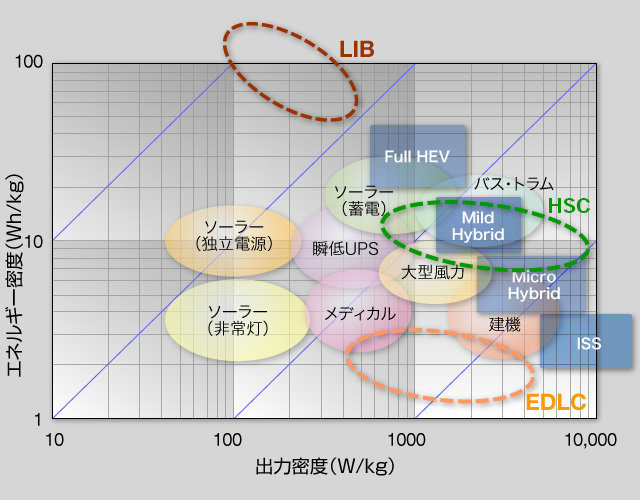What is a Hybrid Super Capacitor (HSC)?
A Hybrid Super Capacitor (HSC) is a capacitor that uses a carbon-based material capable of absorbing lithium ions as the negative electrode material, and improves energy density by adding lithium ions to it, while using the principles of a general electric double layer capacitor.
The principle of charging and discharging differs between the positive electrode and the negative electrode, and the structure combines the negative electrode of a lithium-ion battery and the positive electrode of an electric double layer.
While the positive electrode operates by the principal of physical, Electrical Double Layer, the negative electrode charges and discharges by the redox reaction of lithium. The high energy density compared to conventional capacitors is largely due to the fact that the pseudo electrostatic capacitance of the negative electrode is increased by pre-doping.
Comparison with various electric storage devices
Configuration and characteristics of various electric storage devices
Hybrid Super Capacitor (HSC) is a new electric storage device that combines high power density and high energy density. Compared to similar electricity storage devices, electrical double layer capacitor (EDLC) and lithium ion battery (LIB), we introduce its characteristics.
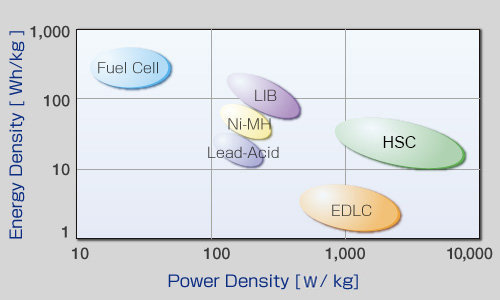
Storage principle and features of HSC
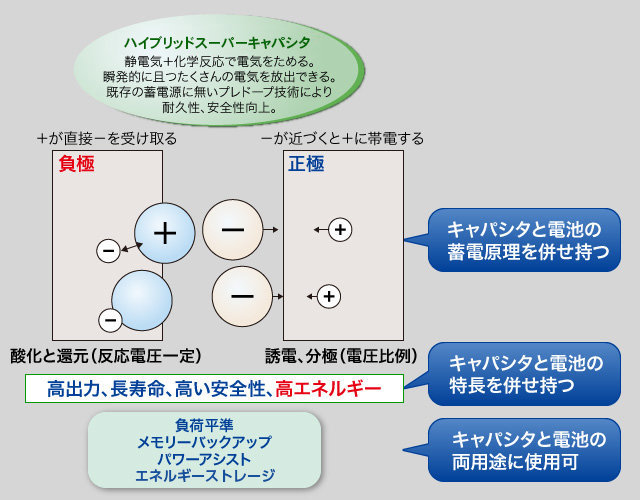
Storage principle and features of electrical double layer capacitors
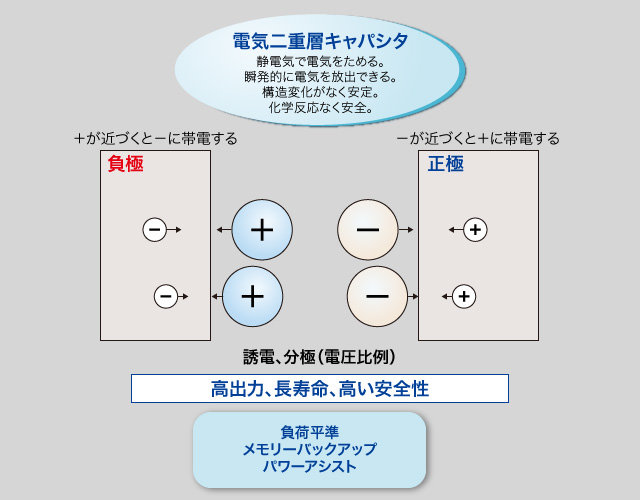
Storage principle and features of lithium-ion batteries
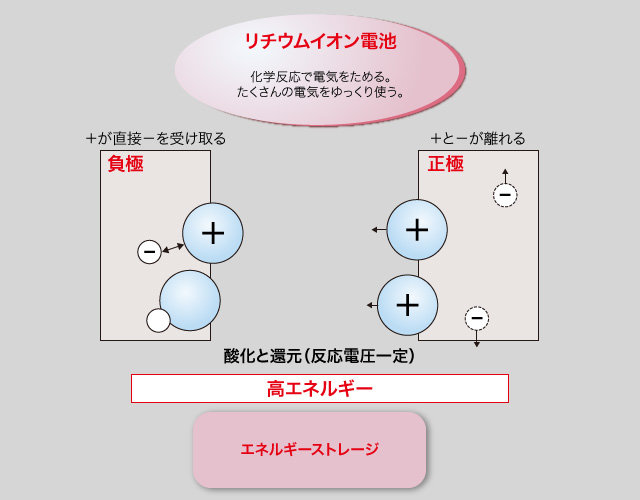
Comparison of characteristics of various electric storage devices
| Hybrid Super Capacitor | Electrical Double Layer Capacitor | Lithium Ion Battery | Lead Acid Battery | |
|---|---|---|---|---|
| Energy density | Medium (Higher at high current) |
Low | Very high | High |
| Power density | High | High | Low (not good for rapid charge) |
Very low |
| Rapid charge/discharge | in seconds | in seconds | in hours (Needs a charge control) |
in hours (Needs a refreshing charge) |
| Internal resistance | Low | Low | High | Very high |
| Low temperature performance | Good | Good | Very bad | Bad |
| High temperature performance | Very good (up to 70℃) |
Good (up to 60℃) |
Very bad (up to 40℃) |
Very bad |
| Self discharge | Small | Big | Small | Big |
| Maintenance | Maintenance free | Maintenance free | Frequent replace required | Frequent replace required |
| Lifetime (float / cycling) |
Long | Long | Relatively short | Short (sudden death occurs) |
| Safety and flammability | High, flammable | High, flammable | Low, flammable (Self heat up / igniting) |
High, not flammable |
| Application | Very high power (Medium energy) |
Very high power (Low energy) |
Medium power (High energy) |
Low power (High energy) |
Market needs and characteristics of various electric storage devices
